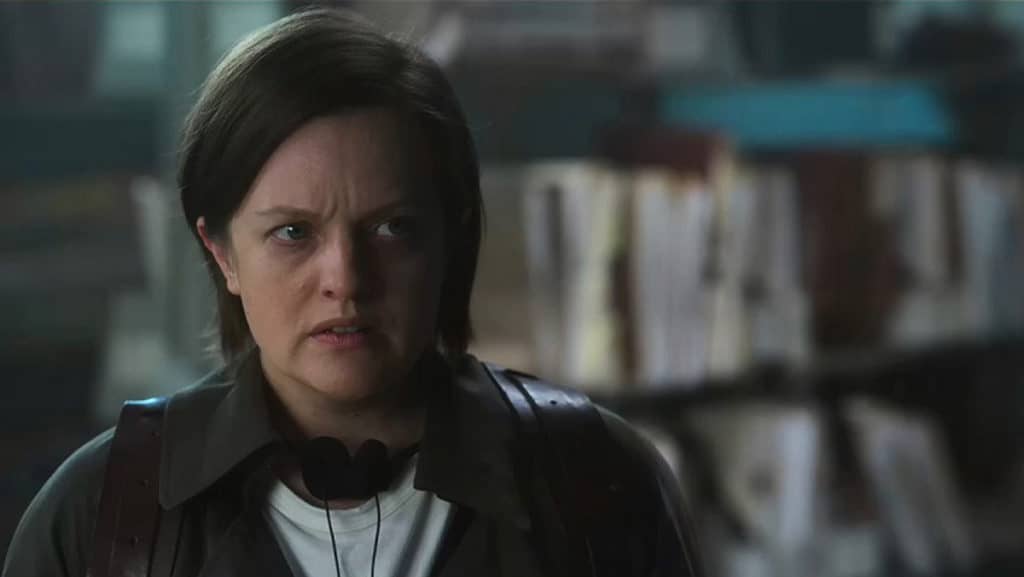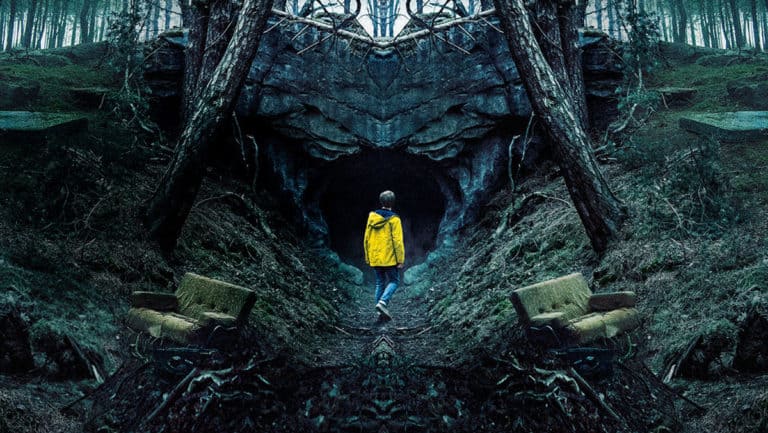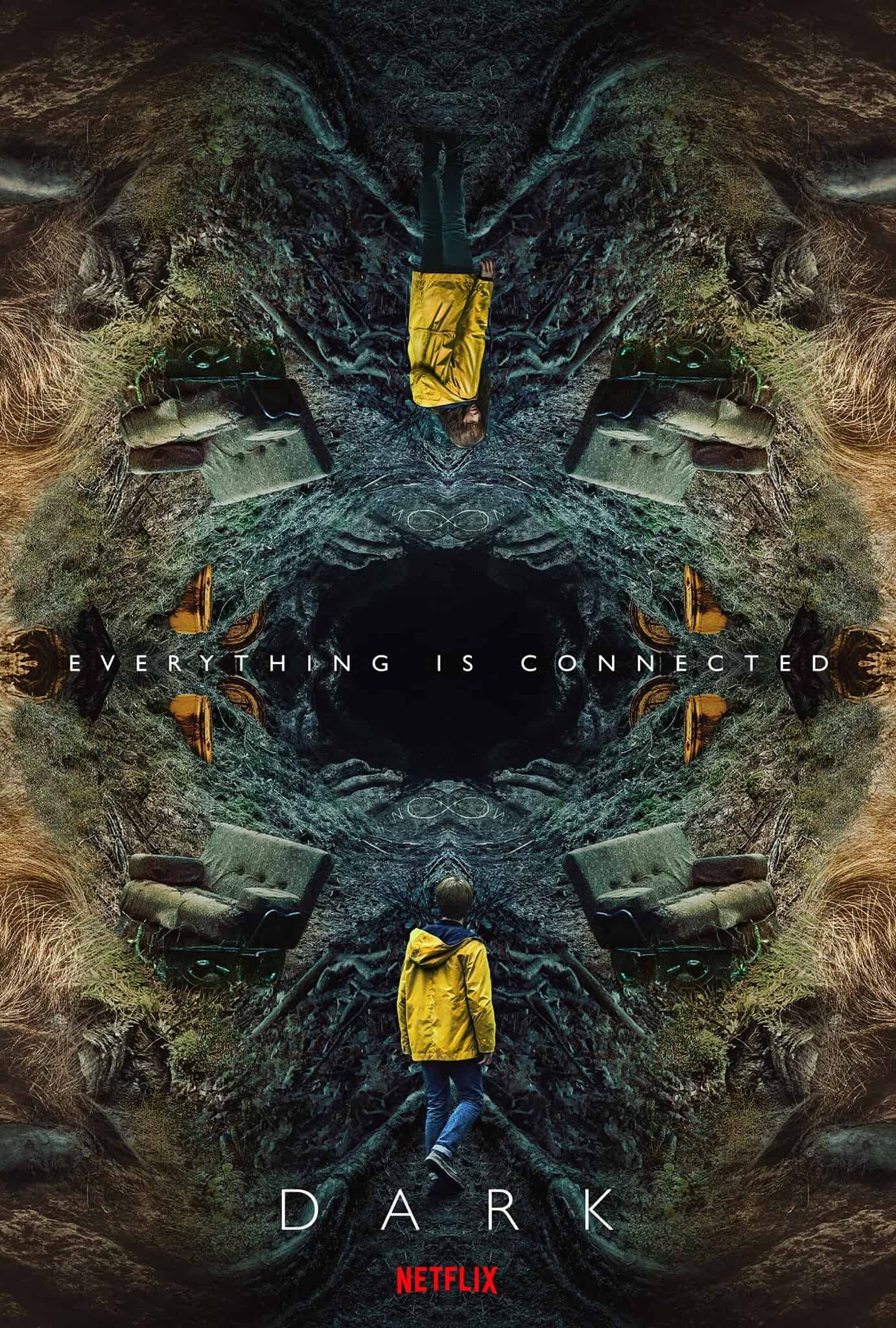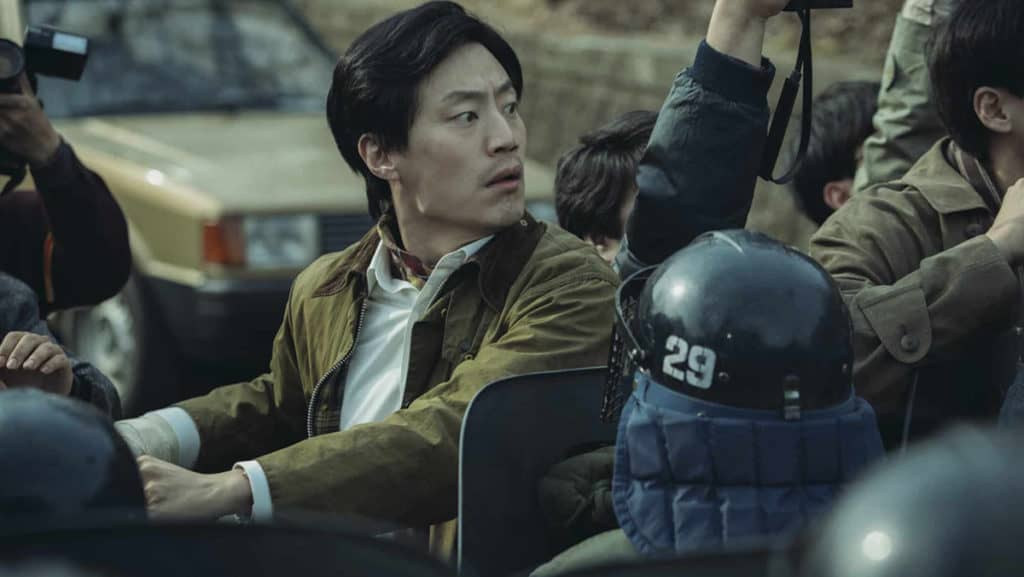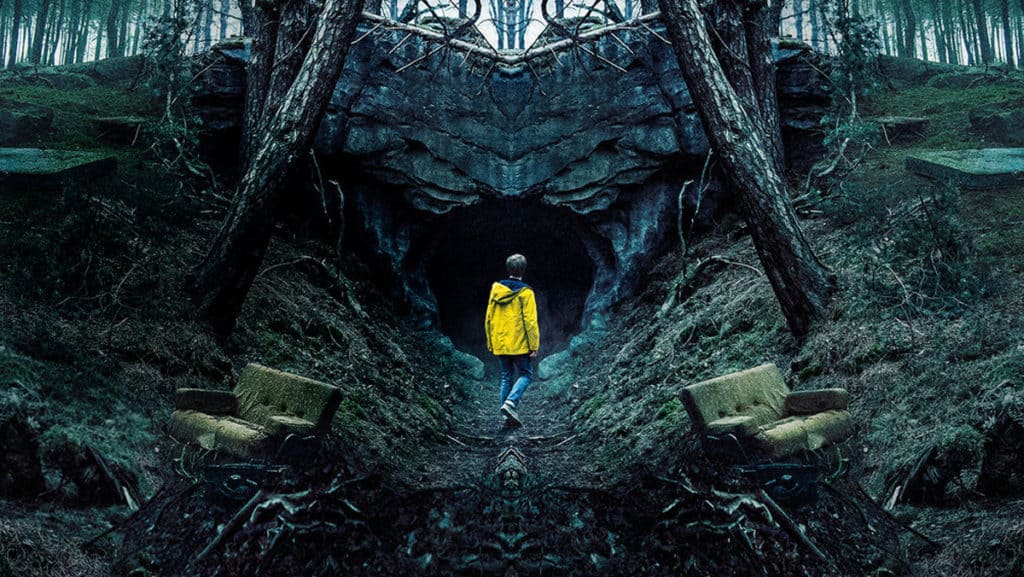Perhaps the most comprehensive definition of the series’ story is encapsulated in the key phrase that appears at the very beginning: “What we know is a drop, what we don’t know is an ocean.” This statement serves as an apt description of Dark, the German Netflix series created by Baran bo Odar and Jantje Friese. The show is a complex science-fiction narrative that captivates viewers with its multiple timelines, interwoven genealogies, and an overwhelming cascade of questions—questions so numerous that any hope of finding definitive answers seems futile. Just as Dark exhilarates, it also provokes frustration; one gradually realizes that in the face of pain, death, and destruction, choosing love, clinging to relationships, or erasing certain elements does not grant the power to alter fate. One can spend hours debating theories, yet by the end of the final season, nothing remains but sheer helplessness.
The Story of the Series
The story begins with the suicide of Jonas’s father—a death that, by the end of the first season, is revealed to be the key to everything. Four families residing in the small German town of Winden find their fates intertwined through the mysterious disappearances of their children across different time periods. In 2019, the disappearance of Mikkel, the child of the fourth family, marks the beginning of the search to unravel the enigma.
As the story unfolds, we become entangled in its intricate and enigmatic layers, yet we gradually realize that this is a tale of time travel—a journey where travelers attempt to change their destinies by altering the past. However, before the first season concludes, it becomes evident that such an endeavor is impossible. Just as Mikkel accepts his fate and chooses to live an ordinary life rather than trying to alter it, the audience, too, resigns themselves to merely witnessing the unfolding events across different time periods.
With the beginning of the second season, we are drawn closer to the origins of these events and introduced to the excavation of the time tunnel. Yet, we remain in constant motion through the fabric of time. Over the course of these two seasons, viewers might be led to believe that time itself is God and that God is, in fact, time. However, this theory is shattered in the final scene of the second season—when Jonas, grieving over Martha’s lifeless body after she has been killed by Adam, suddenly encounters another version of Martha. When this Martha places her small golden sphere on the ground, preparing to take Jonas away mere moments before the apocalypse, Jonas, already familiar with time travel, asks: “To what time are we going?” Martha replies: “That is not the right question. You should ask—to what place?”
Season Three: The Second World
Season three begins on the same date—November 4, 2019—and in the same red forest house where Michael lived in the first season, shrouded in a misty, gray atmosphere. But everything is different. This time, the Nielsen family resides there. Jonas goes to school. He recognizes everyone, but no one recognizes him. It is as if he never existed. Thus, we gradually become aware of the existence of a second world.
In this parallel world, Jonas was never born. He spends the first hour of the season observing the clues of the apocalypse, which bear striking resemblance to those of the first season. Slowly, he realizes that he is standing in a world where he was never born, yet it is still doomed to destruction—just like the other world. The very place where he believed himself to be the cause and catalyst of the apocalypse now reveals that, even in a world where he was never born, the apocalypse still occurs.
This relentless traversal of different times and places makes the story exceedingly complex. To prevent the audience from getting lost amidst this flood of similar information, precise and effective markers are essential—something the creators of Dark have masterfully executed. Color schemes, lighting, and typography play crucial roles in distinguishing the two worlds. For instance, the on-screen titles for Eva’s world (the parallel world introduced in season three) are always written with inverted letters. The framing and set arrangement are also reversed compared to Adam’s world. These visual cues ensure that viewers do not lose their way within the intricate narrative.
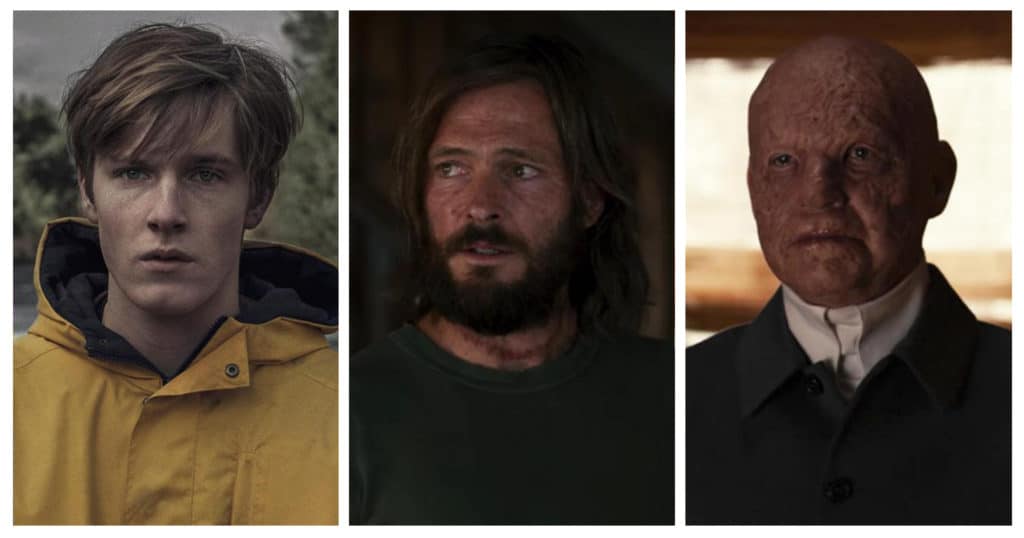
Film Review
Time travel has been a central theme in many films and series, yet the unique perspective and underlying philosophy within Dark set it apart from other works. Most similar productions tend to adopt a superficial approach, often using humor as a narrative device, ultimately leading audiences to fantasize about how wonderful it would be if we could alter the present and future by making changes to the past.
The choice of names such as Noah, Jonas, Adam, Eva, Martha, Bartosz, and Claudia, as well as the prominent placement of The Fall of Man, a painting by Lucas Cranach the Elder, in Adam’s office, demonstrates a clever attempt by the creators to steer the audience’s thoughts toward religious interpretations. However, much like both religious and non-religious observers of cosmic images, each viewer interprets these references through their own lens.
At first glance, Eva appears to represent righteousness, while Adam embodies darkness. However, the narrative makes it clear that the story is not one of black and white. Each character is merely striving to impose their own perspective upon both worlds.

Adam: The Libertarian, Eva: The Fatalist
Determinism is a philosophical theory that states that every event, including human behaviors and actions, is causally determined by an unbroken chain of preceding events. Adam believes in this perspective and, at the same time, does not, because he thinks he can change the past. Throughout the story, he searches for the source of changes and the primary cause of these transformations, believing that if he finds the origin, he can alter all subsequent events. At the beginning of one of the episodes where we enter Adam’s world, he asks, “Where is the origin? In the past, the future, or the present?” He also agrees with Einstein that “the distinction between past, present, or future is an illusion.” However, he must see all three together to uncover the origin, and this is the essence of Adam’s entire struggle throughout the story.
Yet, in this temporal movement and his attempt to alter the origin, a major problem arises: the Bootstrap Paradox. This paradox states that if an object or information is sent from the future to the past, it creates an infinite loop in which the origin of that object or information becomes unknown. That object or information will exist without having a specific source.
The problem begins when Adam, while striving to find the origin, also aids in constructing the time machine by sending information from the future to the past. That is, at the very moment he is trying to find the origin, he himself contributes to its erasure.
The Bootstrap Paradox is a hypothetical causal loop in time travel, where an event causes a second event, which, in turn, is the cause of the first. The birth of Jonas is based on this paradox. He is the child of a person from the future. That is, as he seeks the origin, he realizes that any change would result in his own disappearance. Or the Time Machine Book, which the old clockmaker had written and was taken back to the past by Claudia to be given to his younger self. That is, the book reached the clockmaker before he had even written it. Or the story of Charlotte’s parents, who had traveled from the future to the past, while throughout the story, Charlotte was searching for her parents.

Eva, however, is a fatalist. In this perspective, free will plays no role. History moves in only one predetermined and inevitable course, and actions always lead to an unavoidable and eternal conclusion. Therefore, accepting this inevitability is preferable to resisting it. At the beginning of one of the episodes in Season 3, when we enter Eva’s world, she says: “We all have one thing in common. We are born and we die. It doesn’t matter what we choose along the way.” Eva has come to believe that in order for her world and Adam’s world to persist, the town of Winden must be accepted exactly as it is, and fighting against fate should be avoided.
Season 3 begins with a quote from Schopenhauer: “A man can do what he wills, but he cannot will what he wills.” This stands in direct contrast to Sartre’s existentialist view that “We are condemned to be free; that is, we have no choice but to choose and bear the responsibility of our choices.” Now, these two opposing worldviews stand against each other, each striving to establish its own philosophy as the dominant one.
This endless cycle of repetition in Adam and Eva’s worlds only deepens their convictions, to the point where they no longer hesitate to commit any crime. However, Claudia’s love for her daughter and her determination to end Regina’s endless suffering lead her to search for the secret of their existence in both worlds. Through extensive investigation and connecting the clues, she uncovers a much greater truth—the existence of a third world.
She realizes that these two worlds are the result of a flaw in the origin world. A physicist named Tannhaus, in an attempt to reverse time after losing his son, daughter-in-law, and grandson, unknowingly creates an anomaly. This flaw results in the two parallel worlds of Adam and Eva. Jonas, Martha, and many other characters do not even exist in the origin world, and all the chaos and suffering in the story stem from this fundamental disorder.
The two parallel worlds of Adam and Eva may be an interpretation of Schrödinger’s cat experiment, which is explained by Tannhaus himself at the beginning of Episode 7 in Season 3. The unopened Schrödinger’s box, where the fate of the cat inside remains unknown, represents a paradox—the cat is both alive and dead at the same time.
Now, the mission changes. Neither fatalism nor free will could resolve the paradox of these worlds. This time, the only way to untangle the knot is to return to the origin world and protect the love that led to the creation of the two worlds—though at the cost of their destruction.
This time, Claudia convinces Adam that they must step out of the box and reveal themselves to Tannhaus.
The beginning is the end, and the end is the beginning.
